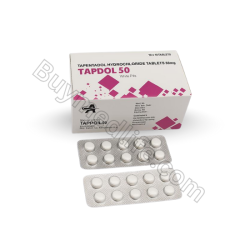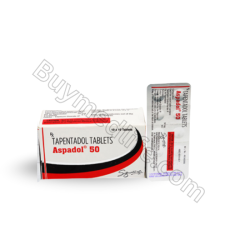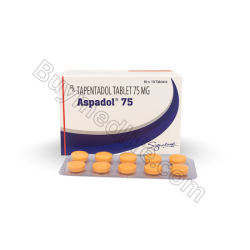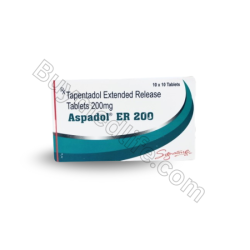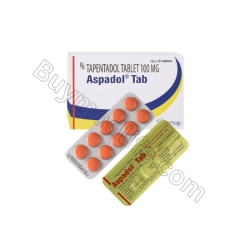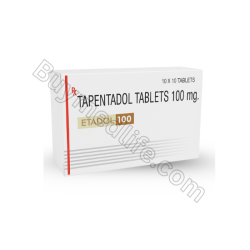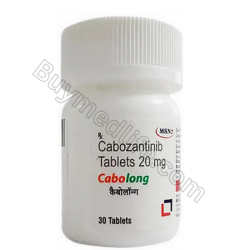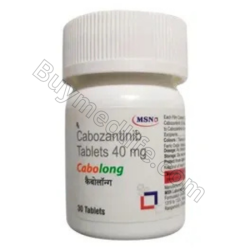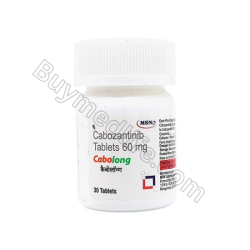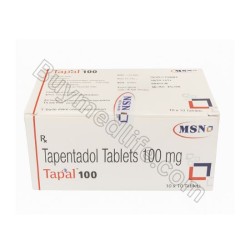Tapfree ER 100mg | Tapentadol | Treat Chronic & Acute Pain
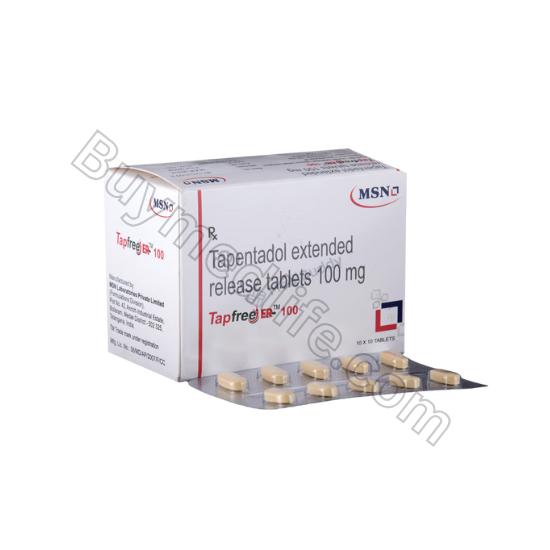
- Stock: In Stock
- Brand: MSN Laboratories
- Model: Tapfree Er
- SKU: TPFER50
- Active Ingredient: Tapentadol
- Treatment: Pain relief
- Alcohol: Don't Drink
- MPN: T54P78F23
Available Options
Tapfree er 100mg is a pain relief medication used to treat moderate to severe pain. It contains the active ingredient Tapentadol, which is a centrally-acting opioid analgesic.
It works by binding to the body's pain receptors in the brain and spinal cord, reducing the perception of pain.
What is Tapfree ER 100mg?
Tapfree ER 100mg is a prescription medication that contains the active ingredient tapentadol. It is an opioid medication used to treat moderate to severe pain.
It works by changing the way the brain and nervous system respond to acute pain. Tapfree ER is an extended-release (ER) form of the medication.
Meaning it releases the drug gradually over time to provide long-lasting pain relief. It is typically prescribed for patients who require round-the-clock pain management and cannot be treated with other medications.
How is Tapfree er 100mg work?
Tapentadol is a medication that is used to relieve moderate to severe pain. It is an opioid pain medication.
Which means that it works by binding to specific receptors in the brain and spinal cord called mu-opioid receptors. These receptors are responsible for transmitting the sensation of pain throughout the body.
When tapentadol binds to these receptors, it causes an increase in the levels of certain chemicals in the brain called neurotransmitters.
These chemicals, such as dopamine and serotonin, help to reduce the perception of pain and increase feelings of pleasure and well-being.
Tapentadol is available in both immediate-release and extended-release formulations. The immediate-release form of the medication is used to relieve pain as needed.
While the extended-release form is used to provide around-the-clock pain relief. Tapentadol ER 100mg is the extended release form of medication.
What are the uses of Tapfree er 100mg pain killer
Tapfree er 100mg is a
pain killer medication that is used to relieve moderate to severe pain caused
by various conditions such as:
1.Musculoskeletal pain
Tapfree er 100mg is used to treat pain caused by conditions such as back
pain, osteoarthritis, and rheumatoid arthritis.
As a centrally acting opioid analgesic—that is, via influencing the central nervous system to reduce pain—Tappfree ER tablets are used to treat musculoskeletal pain. It functions by both blocking the reuptake of norepinephrine, a neurotransmitter implicated in pain processing, and activating the μ-opioid receptor.
2. Postoperative pain
Tapfree ER tablets have a dual mechanism of action, working as both a
mu-opioid receptor agonist and a norepinephrine reuptake inhibitor, providing a
multimodal approach to pain relief that can be particularly effective in
managing postoperative pain.
Numerous pain pathways and mechanisms are involved in the complex
phenomena of postoperative pain. Not all postoperative pain can be effectively
managed by traditional opioid analgesics, which predominantly act as mu-opioid
receptor agonists.
However, Tapfree ER tablets differ from conventional opioid analgesics in
that they have a special dual mode of action. Tapentadol functions as a
mu-opioid receptor agonist and inhibits norepinephrine's reuptake, which is a
neurotransmitter implicated in pain regulation.
This dual mode of action offers a multimodal approach to pain management,
which is especially useful in the treatment of pain following surgery.
Traditional opioid-like analgesia is produced by the mu-opioid receptor agonist
action, and norepinephrine reuptake inhibition both increases the analgesic
impact and may have other advantages.
Better pain relief: Patients with complicated or mixed pain types may benefit most from the dual mechanism of action, which can offer more thorough pain relief.
Decreased opioid tolerance: Over time, more potent pain relief may be possible because norepinephrine reuptake inhibition may slow the growth of opioid tolerance.
Fewer side effects: As nausea and vomiting are frequently linked to conventional opioid analgesics, the dual mode of action may also lessen the likelihood of these side effects.
3.
Rheumatoid arthritis
Tapfree ER tablets have been shown to reduce inflammatory markers, such
as C-reactive protein (CRP) and erythrocyte sedimentation rate (ESR), in
patients with Rheumatoid Arthritis, suggesting a potential anti-inflammatory
effect beyond pain relief.
Rheumatoid arthritis is a long-term autoimmune condition that damages
joints and causes pain and inflammation. Although the main purpose of Tapfree
ER pills is to treat moderate-to-severe pain, research has shown that RA
sufferers can also benefit from them.
Tapentadol, the active component of Tapfree ER, has been shown through
research to modulate the immune system, which may explain some of the product's
anti-inflammatory qualities.
Tapfree ER has been demonstrated in RA patients to:
Reduce CRP levels: RA patients frequently have increased CRP levels, which are a sensitive indicator of inflammation. It has been demonstrated that Tapfree ER lowers CRP levels, which suggests a decrease in systemic inflammation.
Diminish ESR: Tapfree ER has been demonstrated to lower ESR levels in RA patients, hence confirming its anti-inflammatory properties. ESR is an additional indicator of inflammation.
Enhance disease activity scores: Tapfree ER has been demonstrated to enhance scores for various diseases, including the Disease Activity Score 28 (DAS28), a composite indicator of the degree of RA disease activity.
This particular information demonstrates how Tapfree ER pills may help
treat RA by providing anti-inflammatory benefits in addition to pain relief.
Tapfree ER may help slow the progression of the disease and enhance patient
outcomes by lowering inflammatory indicators and raising disease activity
ratings.
It's important to understand that Tapfree ER should not be used in place
of conventional RA treatments because it is not a disease-modifying
anti-rheumatic medication (DMARD). Nevertheless, Tapfree ER may offer more
advantages as an adjuvant treatment in the treatment of inflammation and RA
symptoms.
4. Cancer pain:
Tapfree ER tablets are a useful choice for managing cancer pain since it
has been demonstrated to lessen opioid-induced hyperalgesia (OIH) in cancer
patients. This phenomenon occurs when opioids paradoxically increase pain
sensitivity.
A large percentage of cancer patients have the complicated and
incapacitating symptom of cancer pain. Opioids can have drawbacks and adverse
effects, such as OIH, yet they are frequently used to treat cancer pain.
Opioids can cause a phenomenon known as opioid-induced hypersensitivity,
which raises pain sensitivity and reduces the effectiveness of analgesics. This
can be especially difficult for cancer patients, who may already be in a great
deal of pain and agony.
However, it has been demonstrated that tapfree ER pills lessen OIH in
cancer patients. This is probably because of tapentadol's distinct mode of
action, which consists of:
Mu-opioid receptor agonism: Tapentadol binds to mu-opioid receptors, providing analgesia, but with a lower risk of OIH compared to other opioids.
Norepinephrine reuptake inhibition: Tapentadol also prevents norepinephrine from being reabsorbed, which might lessen inflammation and pain sensitivity.
Research has indicated that Tapfree ER pills are capable of:
Diminish pain: Tapfree ER has been demonstrated to lessen cancer
patients' pain, even in those who have grown used to other opioids.
Enhance quality of life: Tapfree ER can help cancer patients live better
lives by lowering their pain and onset of illness (OIH). This will allow them
to carry out daily activities and feel better overall.
Reduce side effects: Compared to other opioids, Tapfree ER has a
decreased chance of experiencing side effects such nausea, vomiting, and
constipation, making it a more bearable choice for cancer patients.
This particular detail demonstrates how effective Tapfree ER tablets are
at managing pain associated with cancer, especially for people who are at risk
of OIH. Tapfree ER can assist cancer patients better control their pain and
enhance their quality of life by lowering their overall intensity of healing
(OIH) and provide efficient analgesia.
Pain is personal, meaning what’s painful for one person may not be painful for another person. Cancer may cause pain in your bones, nerves, and soft tissues. Some cancer patients experience what doctors refer to as "phantom pain" or "referred pain." There are many types of cancer pain, including:
Cancer-related bone pain might have a pulsating or dull ache-like sensation.
Nerve pain:
When a malignant tumor presses against your spinal cord or nerves, it can cause excruciating pain. Additionally, nerve damage from cancer treatments may result in nerve pain. Nerve pain might have a tingling, burning, or shooting sensation. It might be more challenging to control nerve pain than other forms of cancer-related pain.
Bone pain:
Cancer can spread to the bone and cause pain by damaging the bone tissue. Cancer can affect one specific area of the bone or multiple areas.
You may also hear bone pain known as somatic pain. People often describe this type of pain as aching, dull, or throbbing.
Soft tissue pain:
Sharp, cramping, throbbing, or aching pain might be experienced if cancer affects your soft tissues or organs. Medical terminology refers to the components of your body that surround, support, or link to your internal organs and bones as "soft tissue." Your skin, muscles, fat, and tendons are examples of soft tissue.
Phantom pain:
Phantom pain is the discomfort experienced in a surgically excised body component in order to remove a malignant tumor. Those who have had a mastectomy, for instance, could experience pain where their breast once was.
Referred pain:
It's possible that cancer in one part of your body is causing pain in another. For instance, liver cancer may produce swelling and pressure on nearby nerves, resulting in right shoulder pain.
5. Painful diabetic neuropathy
Tapfree ER tablet can be used to treat Painful Diabetic Neuropathy (PDN).
PDN is a common complication of diabetes that affects the nerves, causing pain,
numbness, and tingling in the hands and feet.
Dual mechanism of action: Tapentadol, the active ingredient in Tapfree
ER, has a dual mechanism of action, working on both the mu-opioid receptor and
the norepinephrine reuptake inhibition pathway. This dual mechanism provides a
more comprehensive approach to pain management in PDN.
Stronger analgesic effect: Tapentadol has been shown to have a stronger analgesic effect compared to other opioids, making it a more effective option for managing severe pain associated with PDN.
6.Dental pain
Tapfree ER tablets have a lower risk of dry socket compared to other
opioid analgesics.
Alveolar osteitis, another name for dry socket, is a common post-tooth extraction
consequence marked by excruciating pain, swelling, and a delayed healing
period. Codeine and hydrocodone are two examples of opioid analgesics that can
raise your risk of dry socket because of their anticholinergic effects, which
can decrease salivary flow and slow the healing process.
Conversely, because of the way Tapfree ER works, there is less chance of
dry socket. The main component of Tapfree ER, tapentadol, has less affinity
than other opioids for the mu-opioid receptor, which lessens its anticholinergic
effects. This indicates that Tapfree ER is a safer choice for those having
dental treatments since it is less likely to inhibit healing and decrease
saliva production.
This demonstrates the value of Tapfree ER in treating dental pain, especially for patients who have a history of or are at high risk for dry socket. Healthcare professionals can minimize the chance of dry socket and promote the best possible healing results by selecting Tapfree ER in addition to offering efficient pain treatment.
How to take tapfree 100mg pain killer
Consult your doctor or pharmacist before taking Tapfree 100mg pain killer if you have any medical conditions, allergies, or are taking any other medications.
Take Tapfree 100mg pain killer orally with or without food as directed by your healthcare provider. The usual recommended adult dose is one tablet every four to six hours as needed for pain relief.
Do not exceed the recommended dose or take Tapfree 100mg pain killer for longer than prescribed without consulting your doctor.
What is the best dosage of tapfree 100mg tablet
The recommended dosage for Tapfree 100mg tablets is typically one tablet per day, taken orally with or without food.
However, it is important to follow the specific instructions provided by your healthcare provider and to not exceed the recommended dosage.
If you have any questions about the proper use of this medication, please consult with your healthcare provider.
Tapfree 100mg Side Effects
Some possible side effects of Tapfree 100mg may include:
- Dizziness
- Dry mouth
- Constipation
- Drowsiness
- Blurred vision
- Nausea
- Headache
- Sweating
- Insomnia
- Decreased appetite
It is important to note that these side effects may vary from person to person, and not everyone may experience them.
Tapfree 100mg Storage Guidline
Tapfree 100mg tablets should be stored at room temperature (15-30 degrees Celsius) in a cool, dry place.
Keep the tablets in their original packaging until ready to use, and avoid exposing them to moisture or extreme temperatures.
The tablets should also be kept out of reach of children and pets. It is also important to check the expiration date on the packaging before using the tablets to ensure they are still safe to consume.

